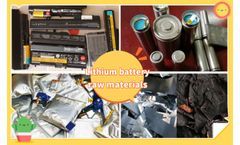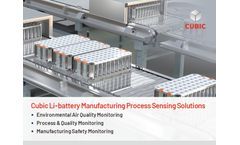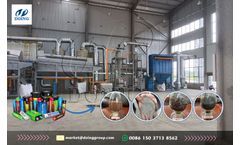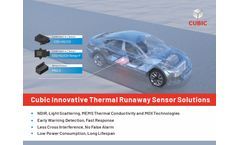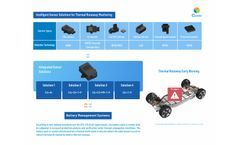Refine by
Lithium Ion Battery Articles & Analysis
92 articles found
With the rapid development of the global new energy industry, the demand for lithium-ion batteries continues to rise, which also brings about the problem of handling a large number of waste batteries. ...
Abstract Lithium-ion batteries are primarily composed of cathode materials, anode materials, separators, and electrolytes. Among commercially available cathode materials, lithium cobalt oxide (LiCoO2), lithium manganese oxide (LiMn2O4), lithium iron phosphate (LiFePO4), and ternary composites are ...
In an era defined by climate urgency and mounting energy demands, lithium‑ion batteries have emerged as a linchpin technology—bridging the gap between intermittent renewables and reliable power access. ...
Lithium-ion forklift batteries, by contrast, offer transformative advantages: rapid charging, predictive maintenance capabilities, seamless integration with smart fleet management, and substantial reductions in carbon footprint. ...
The manufacturing of lithium-ion batteries requires a highly controlled environment, stringent safety protocols, and robust quality assurance mechanisms throughout every stage of production. ...
With "low cost, zero pollution, and high returns" as its core, DOING lithium ion battery recycling plant effectively processes scrapped lithium ion batteries and helps Indian companies quickly enter the blue ocean of lithium ion battery ...
In the production and application of lithium batteries, thermal runaway is a critical safety concern. Thermal runaway is a phenomenon in which the internal temperature of a lithium battery rises sharply due to overcharging, over-discharging, short circuits, or external high temperatures, triggering a chain reaction, leading to ...
In lithium battery production, NMP (N-Methyl pyrrolidone), a critical solvent, is widely applied to dissolve binders including PVDF (Polyvinylidene Fluoride) for preparing cathode slurry. ...
Glass fiber separator: widely used in lithium-ion batteries, lithium air batteries, high rate lithium-ion batteries, and aqueous zinc ion batteries, it is favored due to its high porosity, good liquid absorption, and high ...
N-doped carbon nanotubes, for example, are very electrocatalytic in ORR, and thus a candidate for fuel cells and metal-air batteries. Moreover, nitrogen/sulfur co-doped carbon nanotubes are also extremely electrochemically strong, which can be applied to supercapacitors. Energy Storage: Carbon nanotubes dotted with an anti-microbial layer work brilliantly in ...
Hybrid RTG: These cranes combine diesel engines with energy storage systems, such as lithium-ion batteries. The batteries store energy during operations, which can then power the crane during periods of low activity, reducing fuel consumption and emissions. ...
Applications: Lithium-ion battery: Lithium-ion battery has the advantages of high energy density, high output voltage, long cycle life, and low environmental pollution, and has important applications in electronic products and automobiles. In lithium-ion ...
Lithium-ion batteries are currently widely used in the field of energy storage. ...
Thermal runaway in lithium-ion batteries is a critical concern for safety in electric vehicles. To mitigate the risk of thermal runaway in lithium-ion batteries, it is crucial to proactively implement comprehensive monitoring solution to provide early warning as preventive step against potential ...
Understanding this reaction is a key step toward better battery safety. Thermal runaway in lithium-ion batteries Batteries are designed to store chemical energy, and during thermal runaway, this chemical energy is uncontrollably released. In lithium-ion ...
The world of battery development is being transformed by the intricate chemistry of electrodes. They play a key role in enhancing energy densities and overall battery performance. This can be seen in lithium-ion batteries and their application in electric vehicles. ...
The Climate Institute seeks partnerships with startup initiatives and emerging technology development efforts that transform renewable energy systems. We welcome initiatives and demonstration projects to help advance meaningful climate solutions. The Climate Institute supports our colleagues and partners working on emerging technologies by providing research assistance, intern support, ...
This property provides a platform for the reversible storage and release of various substances, such as lithium ions. One of the key advantages of expandable graphite is its high thermal conductivity. ...
The Challenge In the ever-evolving landscape of energy storage technology, the demand for efficient and sustainable solutions has intensified, prompting a significant shift in the materials utilized for lithium-ion batteries. Anode active materials (AAM) are generally made from carbon-based materials like graphite, silicon, or a combination of ...
Among the various types of batteries available, the lead-acid battery is one of the oldest and most widely used technologies. ...

